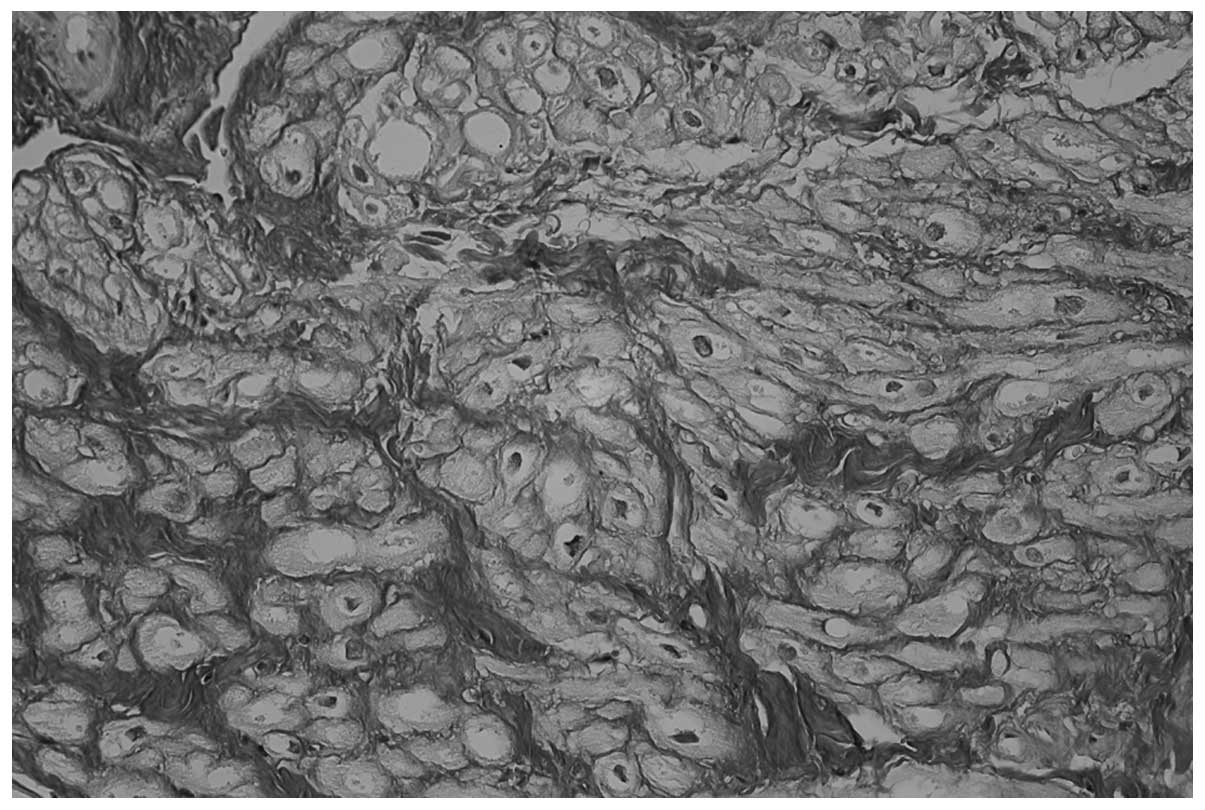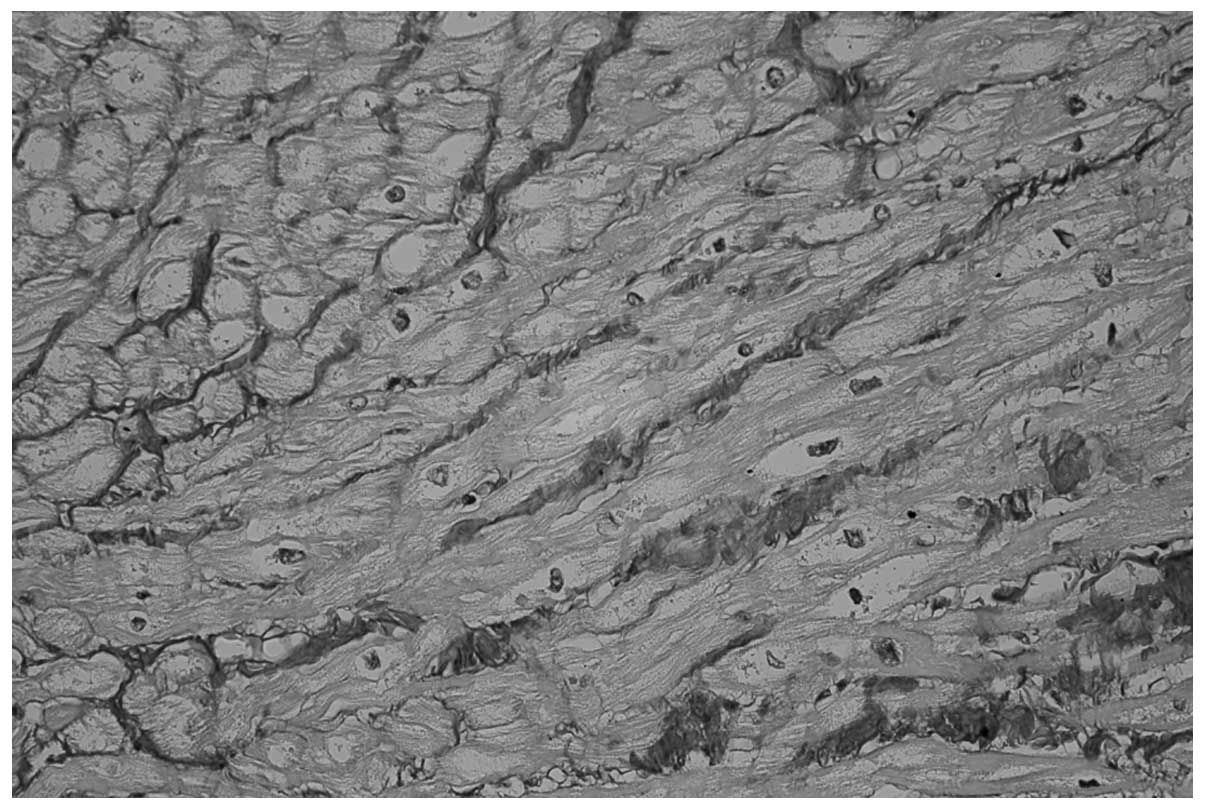|
1
|
Hogue CW Jr and Hyder ML: Atrial
fibrillation after cardiac operation: Risks, mechanisms and
treatment. Ann Thorac Surg. 69:300–306. 2000. View Article : Google Scholar : PubMed/NCBI
|
|
2
|
Creswell LL, Schuessler RB, Rosenbloom M
and Cox JL: Hazards of postoperative atrial arrhythmias. Ann Thorac
Surg. 56:539–549. 1993. View Article : Google Scholar : PubMed/NCBI
|
|
3
|
Almassi GH, Schowalter T, Nicolosi AC,
Aggarwal A, Moritz TE, Henderson WG, Tarazi R, Shroyer AL, Sethi
GK, Grover FL and Hammermeister KE: Atrial fibrillation after
cardiac surgery: A major morbid event? Ann Surg. 226:501–511. 1997.
View Article : Google Scholar : PubMed/NCBI
|
|
4
|
Cox JL: A perspective of postoperative
atrial fibrillation in cardiac operations. Ann Thorac Surg.
56:405–409. 1993. View Article : Google Scholar : PubMed/NCBI
|
|
5
|
Aranki SF, Shaw DP, Adams DH, Rizzo RJ,
Couper GS, VanderVliet M, Collins JJ Jr, Cohn LH and Burstin HR:
Predictors of atrial fibrillation after coronary artery surgery.
Current trends and impact on hospital resources. Circulation.
94:390–397. 1996. View Article : Google Scholar : PubMed/NCBI
|
|
6
|
Zaman AG, Archbold RA, Helft G, Paul EA,
Curzen NP and Mills PG: Atrial fibrillation after coronary artery
bypass surgery: A model for preoperative risk stratification.
Circulation. 101:1403–1408. 2000. View Article : Google Scholar : PubMed/NCBI
|
|
7
|
Groves PH and Hall RJ: Atrial
tachyarrhythmias after cardiac surgery. Eur Heart J. 12:458–463.
1991.PubMed/NCBI
|
|
8
|
Ad N, Snir E, Vidne BA and Golomb E:
Potential preoperative markers for the risk of developing atrial
fibrillation after cardiac surgery. Semin Thorac Cardiovasc Surg.
11:308–313. 1999. View Article : Google Scholar : PubMed/NCBI
|
|
9
|
Ad N, Snir E, Vidne BA and Golomb E:
Histologic atrial myolysis is associated with atrial fibrillation
after cardiac operation. Ann Thorac Surg. 72:688–693. 2001.
View Article : Google Scholar : PubMed/NCBI
|
|
10
|
Mathew JP, Parks R, Savino JS, Friedman
AS, Koch C, Mangano DT and Browner WS: Atrial fibrillation
following coronary artery bypass graft surgery: Predictors,
outcomes and resource utilization. Multi Center Study of
Perioperative Ischemia Research Group. JAMA. 276:300–306. 1996.
View Article : Google Scholar : PubMed/NCBI
|
|
11
|
Maisel WH, Rawn JD and Stevenson WG:
Atrial fibrillation after cardiac surgery. Ann Intern Med.
135:1061–1073. 2001. View Article : Google Scholar : PubMed/NCBI
|
|
12
|
Banach M, Rysz J, Drozdz JA, Okonski P,
Misztal M, Barylski M, Irzmanski R and Zaslonka J: Risk factors of
atrial fibrillation following coronary artery bypass grafting: A
preliminary report. Circ J. 70:438–441. 2006. View Article : Google Scholar : PubMed/NCBI
|
|
13
|
Kitzman DW and Edwards WD: Age-related
changes in the anatomy of the normal human heart. J Gerontol.
45:M33–M39. 1990. View Article : Google Scholar : PubMed/NCBI
|
|
14
|
Lie JT and Hammond PI: Pathology of the
senescent heart: Anatomic observations on 237 autopsy studies of
patients 90 to 105 years old. Mayo Clin Proc. 63:552–564. 1988.
View Article : Google Scholar : PubMed/NCBI
|
|
15
|
Goette A, Juenemann G, Peters B, Klein HU,
Roessner A, Huth C and Röcken C: Determinants and consequences of
atrial fibrosis in patients undergoing open heart surgery.
Cardiovasc Res. 54:390–396. 2002. View Article : Google Scholar : PubMed/NCBI
|
|
16
|
Vaziri SM, Larson MG, Benjamin EJ and Levy
D: Echocardiographic predictors of nonrheumatic atrial
fibrillation. The framingham heart study. Circulation. 89:724–730.
1994. View Article : Google Scholar : PubMed/NCBI
|
|
17
|
Henry WL, Morganroth J, Pearlman AS, Clark
CE, Redwood DR, Itscoitz SB and Epstein SE: Relation between
echocardiographically determined left atrial size and atrial
fibrillation. Circulation. 53:273–279. 1976. View Article : Google Scholar : PubMed/NCBI
|
|
18
|
Ausma J, Litjens N, Lenders MH, Duimel H,
Mast F, Wouters L, Ramaekers F, Allessie M and Borgers M: Time
course of atrial fibrillation-induced cellular structural
remodeling in atria of the goat. J Mol Cell Cardiol. 33:2083–2094.
2001. View Article : Google Scholar : PubMed/NCBI
|
|
19
|
Li D, Fareh S, Leung TK and Nattel S:
Promotion of atrial fibrillation by heart failure in dogs: Atrial
remodeling of a different sort. Circulation. 100:87–95. 1999.
View Article : Google Scholar : PubMed/NCBI
|
|
20
|
Boldt A, Wetzel U, Lauschke J, Weigl J,
Gummert J, Hindricks G, Kottkamp H and Dhein S: Fibrosis in left
atrial tissue of patients with atrial fibrillation with and without
underlying mitral valve disease. Heart. 90:400–405. 2004.
View Article : Google Scholar : PubMed/NCBI
|
|
21
|
Pirolo JS, Hutchins GM and Moore GW:
Myocyte vacuolization in infarct border zones is reversible. Am J
Pathol. 121:444–450. 1985.PubMed/NCBI
|
|
22
|
Ishii Y, Schuessler RB, Gaynor SL, Yamada
K, Fu AS, Boineau JP and Damiano RJ Jr: Inflammation of atrium
after cardiac surgery is associated with inhomogeneity of atrial
conduction and atrial fibrillation. Circulation. 111:2881–2888.
2005. View Article : Google Scholar : PubMed/NCBI
|
|
23
|
Issac TT, Dokainish H and Lakkis NM: Role
of inflammation in initiation and perpetuation of atrial
fibrillation: A systematic review of the published data. J Am Coll
Cardiol. 50:2021–2028. 2007. View Article : Google Scholar : PubMed/NCBI
|
|
24
|
Al Chekakie MO, Welles CC, Metoyer R,
Ibrahim A, Shapira AR, Cytron J, Santucci P, Wilber DJ and Akar JG:
Pericardial fat is independently associated with human atrial
fibrillation. J Am Coll Cardiol. 56:784–788. 2010. View Article : Google Scholar : PubMed/NCBI
|
|
25
|
Batal O, Schoenhagen P, Shao M, Ayyad AE,
Van Wagoner DR, Halliburton SS, Tchou PJ and Chung MK: Left atrial
epicardial adiposity and atrial fibrillation. Circ Arrhythm
Electrophysiol. 3:230–236. 2010. View Article : Google Scholar : PubMed/NCBI
|
















